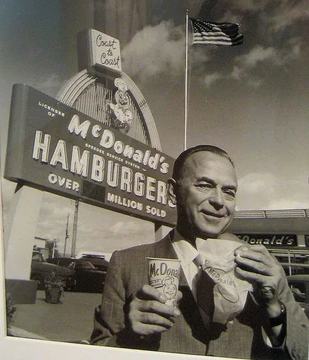China's GHOST Cities
$170 BILLION worth of Empty Cities, Abandoned Skyscrapers, and Fake European Towns that nobody lives in
Here are China's most Haunting Ghost Cities:
$170 BILLION worth of Empty Cities, Abandoned Skyscrapers, and Fake European Towns that nobody lives in
Here are China's most Haunting Ghost Cities:

1. Ordos
A $161 billion ghost city built for 1 million people.
• Currently 90% empty
• Built during the coal mining boom
• Looks like a sci-fi movie set
• Most apartments are owned by investors who never lived there
A $161 billion ghost city built for 1 million people.
• Currently 90% empty
• Built during the coal mining boom
• Looks like a sci-fi movie set
• Most apartments are owned by investors who never lived there
2. Jun Ming's Ghost Districts
• Population size of Madrid
• 15 skyscrapers demolished in 2021
• Unfinished since 2013
• Empty kindergartens
• Abandoned hospitals
• Population size of Madrid
• 15 skyscrapers demolished in 2021
• Unfinished since 2013
• Empty kindergartens
• Abandoned hospitals
If you're into Tech, you need to checkout:
The AI library
Founders can now focus on improving their product while, the AI Library helps you market it to the right audience with the exclusive Startup Spotlight Program, available to only a few brands monthly.
Submit your product now - bit.ly/growyourusers
The AI library
Founders can now focus on improving their product while, the AI Library helps you market it to the right audience with the exclusive Startup Spotlight Program, available to only a few brands monthly.
Submit your product now - bit.ly/growyourusers
3. Tianducheng: "Paris of the East"
• Complete with Eiffel Tower, pairs streets and buildings replica
• Empty Champs-Élysées
• Planned for 10,000 residents
• Current population: 1,000
• Too expensive for locals
• Mostly tourist attractions
• Complete with Eiffel Tower, pairs streets and buildings replica
• Empty Champs-Élysées
• Planned for 10,000 residents
• Current population: 1,000
• Too expensive for locals
• Mostly tourist attractions
4. Yujiapu: "China's Manhattan"
• $50 billion investment
• Empty skyscrapers
• No rush hour traffic
• Promotional video mocked NYC
• Ironically, it became more deserted than NYC
• $50 billion investment
• Empty skyscrapers
• No rush hour traffic
• Promotional video mocked NYC
• Ironically, it became more deserted than NYC
5. Thames Town: "Little London"
The Replica of London City
• Red phone boxes ✓
• Fish & chip shops ✓
• English pubs ✓
• Victorian architecture ✓
• People? ×
• Another failed replica city
The Replica of London City
• Red phone boxes ✓
• Fish & chip shops ✓
• English pubs ✓
• Victorian architecture ✓
• People? ×
• Another failed replica city
6. Chenggong: The Student City
• Failed city turned university hub
• 7 colleges moved in
• Busy during term time
• Ghost town in winter
• Gradual transformation
• Failed city turned university hub
• 7 colleges moved in
• Busy during term time
• Ghost town in winter
• Gradual transformation
7. Why Does China Keep Building?
• Property = safe investment
• Chinese can't invest abroad easily
• Real estate drives economic growth
• Middle-class parks money in empty homes
• Construction = GDP growth
• Property = safe investment
• Chinese can't invest abroad easily
• Real estate drives economic growth
• Middle-class parks money in empty homes
• Construction = GDP growth
8. Why This Matters:
• Shows risks of rapid development
• Property bubble warning
• Environmental impact
• Resource waste
• Economic sustainability questions
• Shows risks of rapid development
• Property bubble warning
• Environmental impact
• Resource waste
• Economic sustainability questions
9. China's ghost cities represent human history's largest real estate bubble.
Only time will tell whether they become thriving metropolises or remain empty monuments to excess.
Only time will tell whether they become thriving metropolises or remain empty monuments to excess.
That's wrap
If you found this thread helpful:
Follow me @thetripathi58 for more such content.
If you found this thread helpful:
Follow me @thetripathi58 for more such content.
• • •
Missing some Tweet in this thread? You can try to
force a refresh












